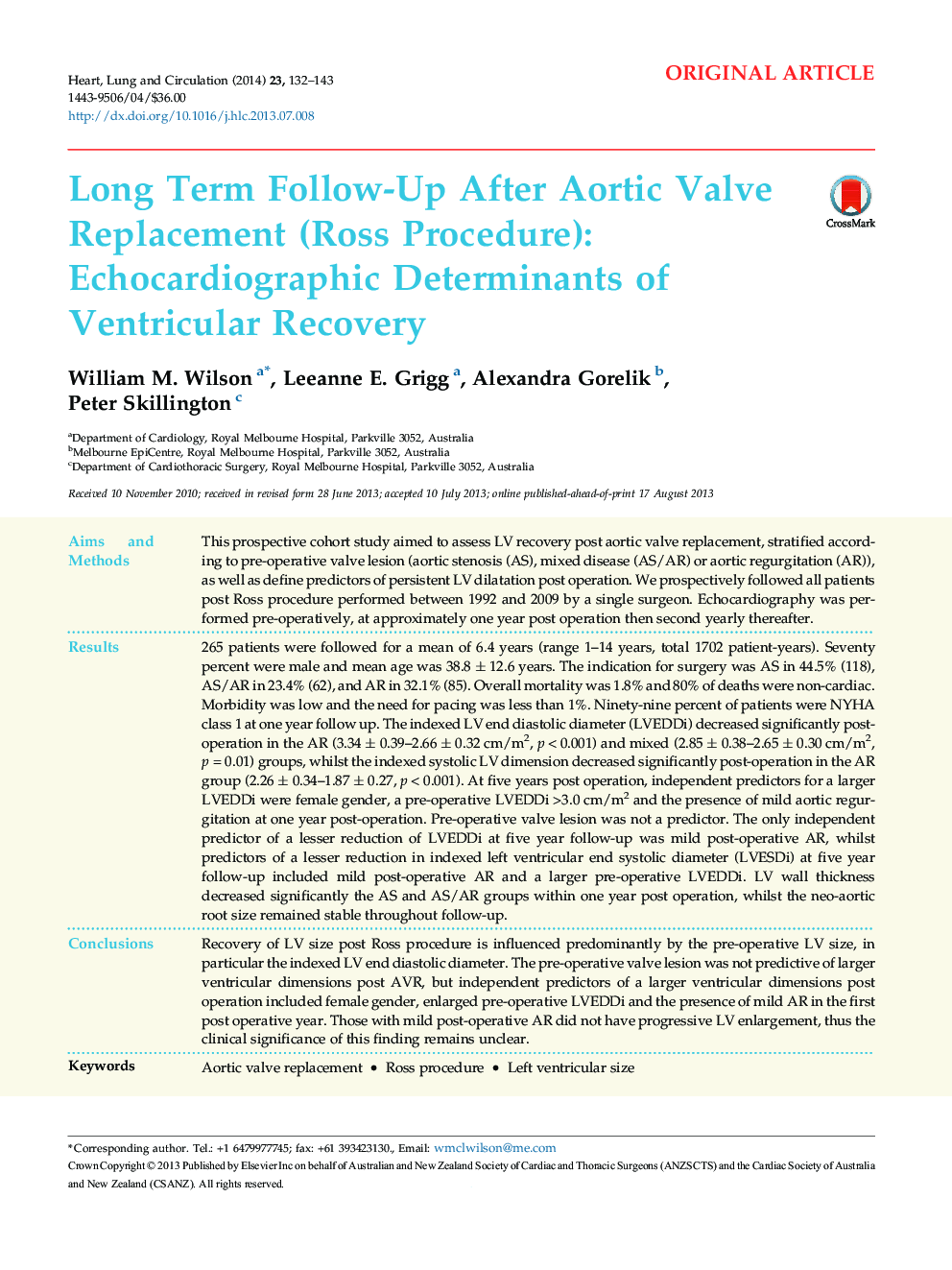| Article ID | Journal | Published Year | Pages | File Type |
|---|---|---|---|---|
| 2918889 | Heart, Lung and Circulation | 2014 | 12 Pages |
Aims and MethodsThis prospective cohort study aimed to assess LV recovery post aortic valve replacement, stratified according to pre-operative valve lesion (aortic stenosis (AS), mixed disease (AS/AR) or aortic regurgitation (AR)), as well as define predictors of persistent LV dilatation post operation. We prospectively followed all patients post Ross procedure performed between 1992 and 2009 by a single surgeon. Echocardiography was performed pre-operatively, at approximately one year post operation then second yearly thereafter.Results265 patients were followed for a mean of 6.4 years (range 1–14 years, total 1702 patient-years). Seventy percent were male and mean age was 38.8 ± 12.6 years. The indication for surgery was AS in 44.5% (118), AS/AR in 23.4% (62), and AR in 32.1% (85). Overall mortality was 1.8% and 80% of deaths were non-cardiac. Morbidity was low and the need for pacing was less than 1%. Ninety-nine percent of patients were NYHA class 1 at one year follow up. The indexed LV end diastolic diameter (LVEDDi) decreased significantly post-operation in the AR (3.34 ± 0.39–2.66 ± 0.32 cm/m2, p < 0.001) and mixed (2.85 ± 0.38–2.65 ± 0.30 cm/m2, p = 0.01) groups, whilst the indexed systolic LV dimension decreased significantly post-operation in the AR group (2.26 ± 0.34–1.87 ± 0.27, p < 0.001). At five years post operation, independent predictors for a larger LVEDDi were female gender, a pre-operative LVEDDi >3.0 cm/m2 and the presence of mild aortic regurgitation at one year post-operation. Pre-operative valve lesion was not a predictor. The only independent predictor of a lesser reduction of LVEDDi at five year follow-up was mild post-operative AR, whilst predictors of a lesser reduction in indexed left ventricular end systolic diameter (LVESDi) at five year follow-up included mild post-operative AR and a larger pre-operative LVEDDi. LV wall thickness decreased significantly the AS and AS/AR groups within one year post operation, whilst the neo-aortic root size remained stable throughout follow-up.ConclusionsRecovery of LV size post Ross procedure is influenced predominantly by the pre-operative LV size, in particular the indexed LV end diastolic diameter. The pre-operative valve lesion was not predictive of larger ventricular dimensions post AVR, but independent predictors of a larger ventricular dimensions post operation included female gender, enlarged pre-operative LVEDDi and the presence of mild AR in the first post operative year. Those with mild post-operative AR did not have progressive LV enlargement, thus the clinical significance of this finding remains unclear.
